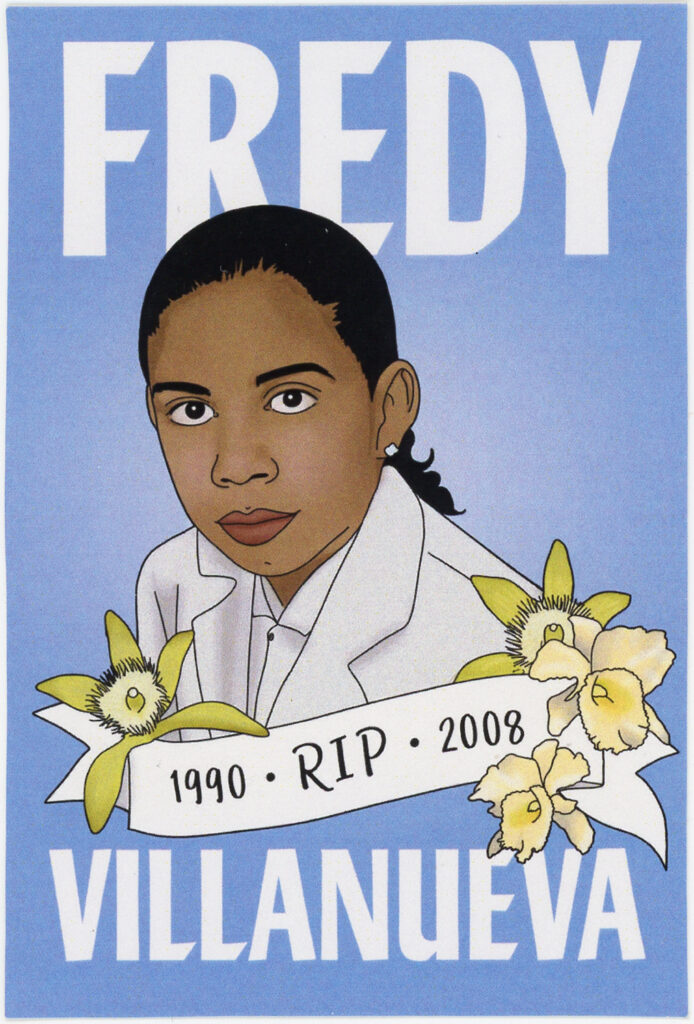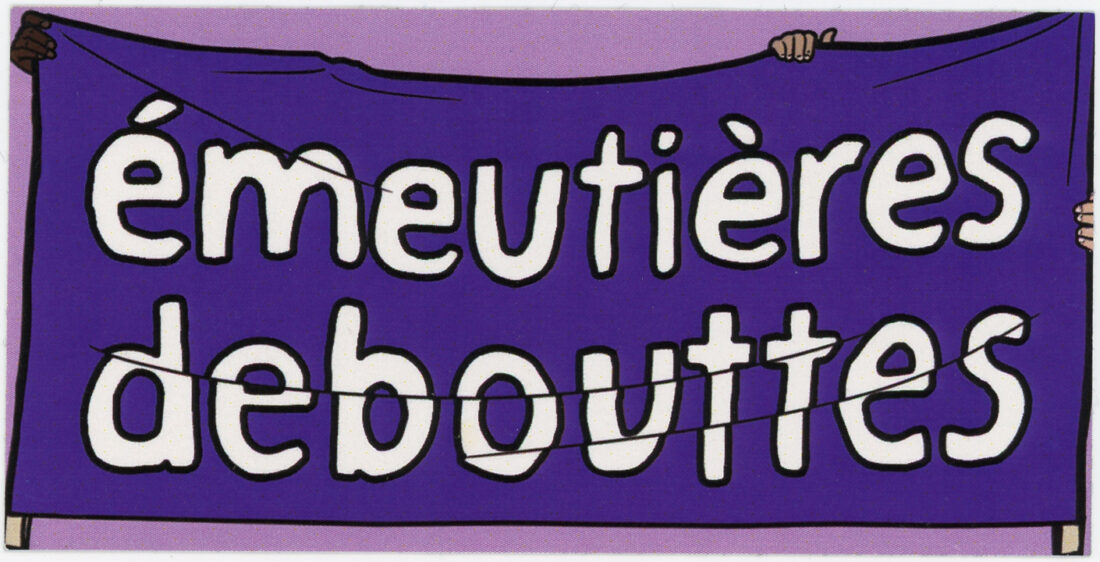Featured artist: Zola (MTL)
- Published
- in all, Canada, Featured artist
In 2019, I happened to meet Kevin Yuen Kit Lo, a graphic designer, educator, and community organizer, who was working at the annual Montreal Anarchist Book Fair. He had a bunch of stickers for sale by him and by another artist, Zola, also from Montreal. He gave me Zola’s contact info for an interview via email, which is featured in this post.
Zola is a new member of Justseeds Artists’ Cooperative, and her bio from the Justseeds website is listed below:
“Zola is an anarchist, queer, settler of french-canadian descent based in so-called Montréal, occupied Kanien’kehá:ka and Anishinabe territories. She is passionate about bringing together grassroots community organizing and radical street art. Their political upbringing was through anticapitalist undercurrents of the Quebec student movement (2005-2015), and they are now connected to different affinity groups and collectives addressing anticolonialism, antiracism, and art and activism. She has been doing street art for about 10 years, and for the better part of the last 8 years, their wheatpastes subjects have focused on the allegory of the rioter or anonymous protestor, breaking the stereotype of the skinny white male black bloc.”
SK: Why are you drawn to making stickers in particular?
Zola: Even though I am a child of the internet, I love the materiality of politics. Stickers are amazing little vessels of culture and messages that can be shared so widely or even just affect a neighbor you’ve never met. It’s more magical than any social media’s algorithm.
SK: Can you describe the process in which you come up with your designs?
Zola: I either come up with a design based on conversations with other activists about what would be needed at the moment of a campaign or moment in the struggle, or more generally by being creatively influenced by other artists I follow.
SK: It looks like some of the designs focus on issues related to Montreal and Quebec, while others focus on issues elsewhere or on more global issues that span boundaries. Could provide any sociopolitical context for the Montreal/Quebec stickers?
Zola: The “Gardas touchez-nous pas” (Gardas don’t touch us) sticker was made during the student strike of 2015 in Montreal. Garda is the security company hired by many education institutions, including the one I where I attended at the time, UQAM [Université du Québec à Montréal]. In the 2015 context, there was a real issue with making the strike vote effective with cancelling classes, and the university administration decided to push back against our right to strike and called onto a special force of security guards to physically stop students from going into classrooms to cancel them. There were many assault situations and fighting. The sticker wanted to remind Gardas they were legally not allowed to even touch us. It was made collectively in a small group of striking students.
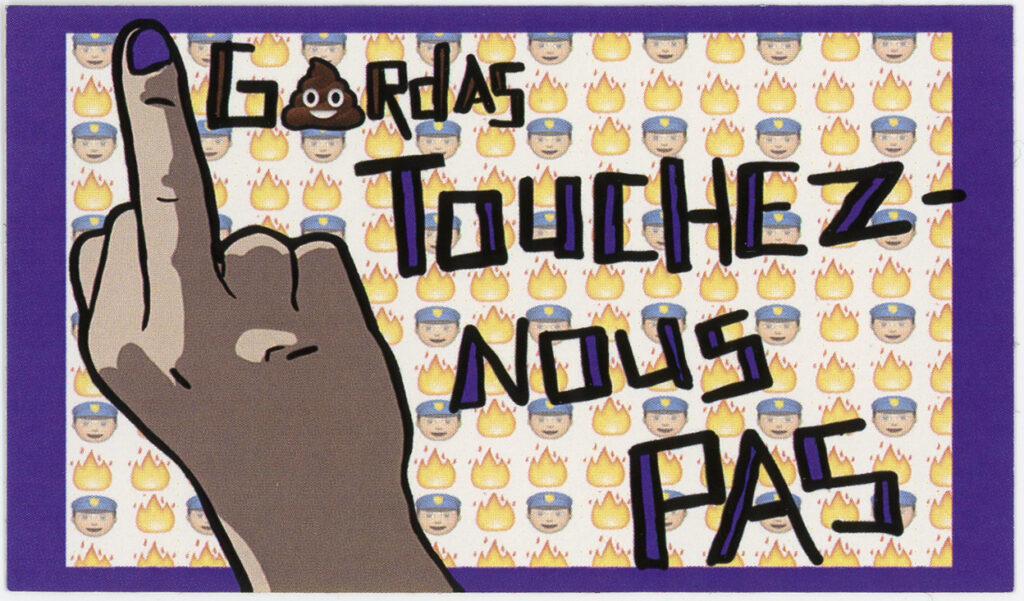
Zola: “Émeutières debouttes” (femme rioters standing up) is a reference to the slogan “Québécoises debouttes!” used in the women’s rights movement locally in the 70s. “Debouttes” is a feminized version of “standing up”, using joual, the Quebec-specific slang.
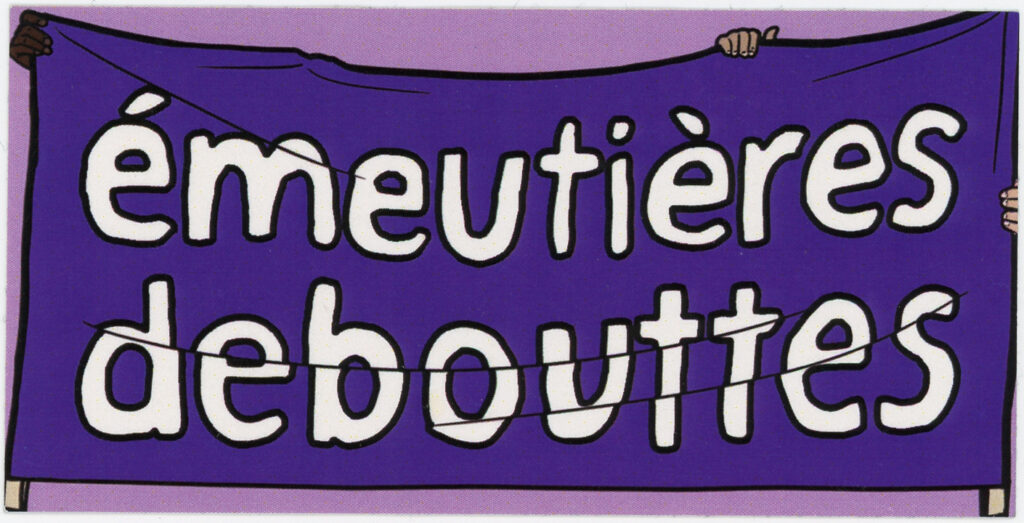
Zola: The QPIRG-Concordia red megaphone is an object that most every radical left group in Montreal has used in a public event or demonstration. I like to think it is part of the mythology of Montreal’s left. QPIRG-Concordia has offered a very important amount of resources to social movements in the past 10 years in the city.
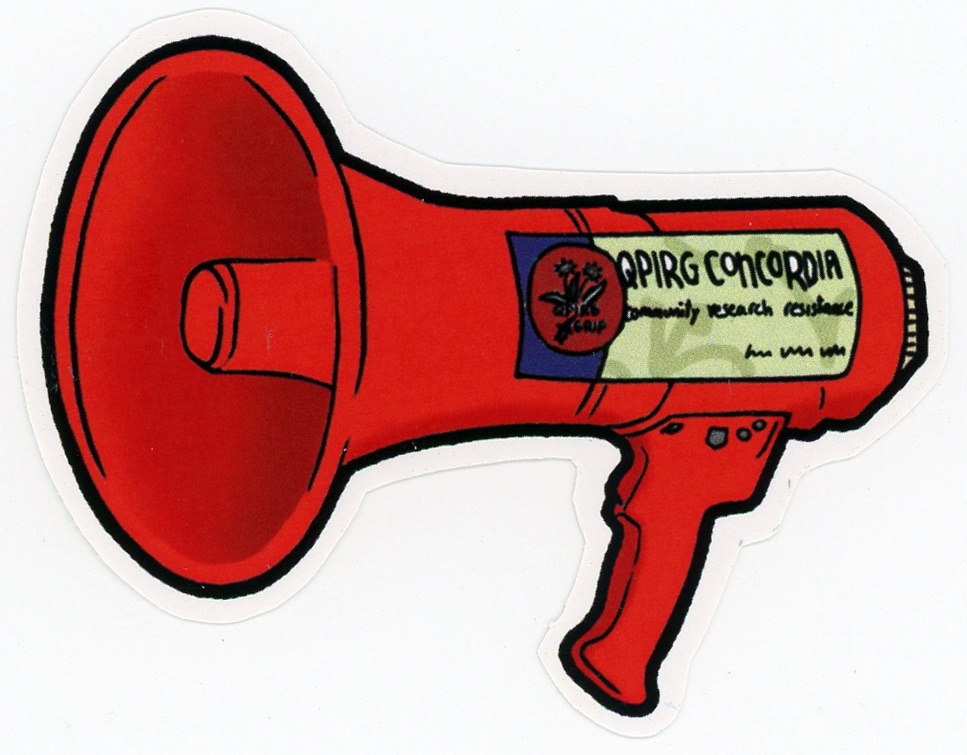
Zola: Fredy Villanueva was an 18 year old Honduran youth who was shot and killed by Montreal police in 2008. He was unarmed and trying to help his brother who was being arrested for playing dice in a public park. The incident happened in his neighborhood, Montréal-Nord, in which a large portion of the population is black and/or immigrant and there are high occurrences of police racial profiling and abuse. Fredy’s mom and extended family have been calling for justice since his death and the riots that followed the shooting. Fredy’s murder woke up a whole generation of anti-racist and anti-police activists in the neighborhood and the rest of the city. This portrait was made with the committee in support of the Villanueva family for the 10-year anniversary of his death.
